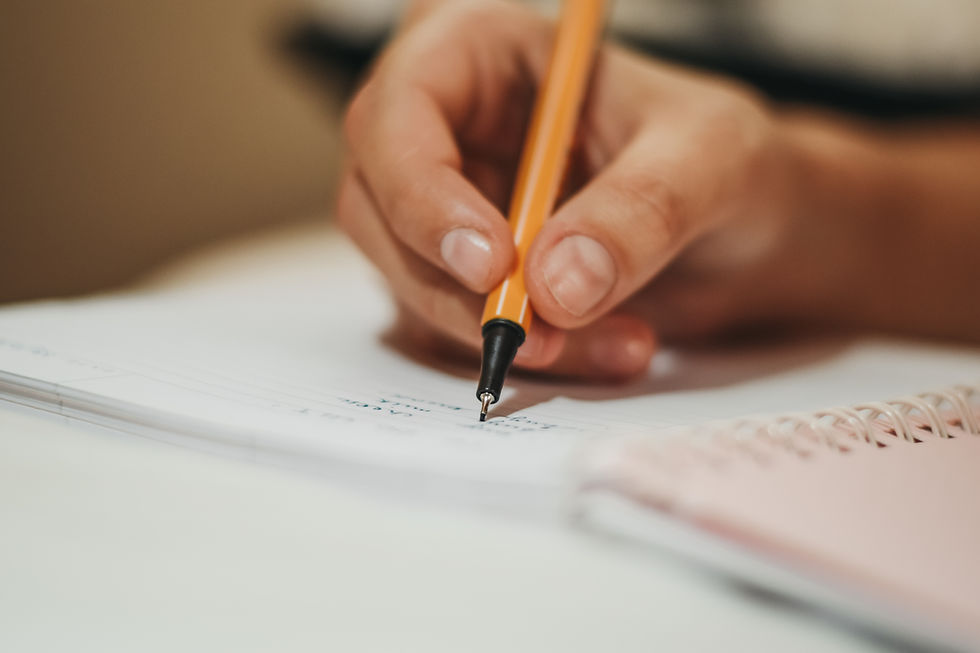The Three Levels of Editing and What They Do For YOUR Manuscript
- TSE Team

- 20 minutes ago
- 3 min read
So, you've been told your manuscript needs editing and then when you've found your editor, they say, "Sure! What kind?"
*Insert confused blinking man meme* Editing is more than just fixing typos.
To maximise the star quality of your book, hiring professional editors to perform three key levels of manuscript editing is essential.

The three levels are -
Developmental editing,
Copy and Line editing,
Proofreading.
Each step targets specific areas of your manuscript, helping you create a strong, polished book that appeals to your target audience.
Developmental Editing: Shaping Your Story or Message
Developmental editing, also called content or structural editing, is the first editing step you'll come to. This involves working closely with a developmental editor to improve your manuscript’s core without losing your unique voice or style. It can happen at the outline stage, as well as after your first draft (and after your third, fourth, fifth....)
For fiction, developmental editing strengthens:
Plot and story arc
Pacing and tension
Character development and motivation
Flow of Dialogue
Point of View/Tense consistency
The developmental editing process often begins with a manuscript/outline evaluation. This evaluation provides an analysis of your book’s current strengths and weaknesses, along with actionable suggestions for improvement. These can be actioned by your writing team (or yourself, if you're feeling creatively confident!)
It may involve rewriting sections, shuffling chapters, or juggling character arcs. The goal is to create a strong foundation before moving on to finer details.
DID YOU KNOW?
Over on the Build-a-Book portal, our developmental editing is part of the Pro Upgrade Package!
The Pro Package Upgrade - This adds an expert developmental editor to your project and includes additional editing and writer reworking to ensure your book is reaching its highest potential. 
Copy and Line Editing: Yes, these are two different kinds of editing!
Once the manuscript is finalised, copy and line editing prepare your manuscript for illustration and formatting This step focuses on cleaning up the text and follows language rules. (We offer both as standard with our writing packages, just sayin' 😉)
Copy editors check for:
Grammar and Syntax: Correcting errors in subject-verb agreement, tense usage, and sentence structure.
Punctuation and Spelling: Ensuring accuracy and correct usage.
Consistency: Checking for inconsistencies, like in names (Is it 'Holly' or 'Hollie'?), settings, capitalisation, and hyphenation and not to mention, the dreaded em–dash! (e.g., following a specific style guide).
Clarity: Making sure sentences are clear and unambiguous.
Line editing, can often be combined with copy editing (but not always! Be sure to clarify with your editor exactly what they offer), looks closely at sentence structure and word choice to improve tone and rhythm. It helps avoid awkward phrasing and repetitive language, making your story easier to engage with and enjoy.
Word Choice: Eliminating weak, vague, or overused words.
Pacing and Rhythm: Adjusting sentence length variation for better flow.
Voice and Tone: Ensuring the author's voice is consistent and appropriate for the target age group.
This stage is about precision and polish. It transforms your draft into a professional manuscript ready for the next phase.
Proofreading: The Final Quality Check
Proofreading is the last step before your book goes to print or digital release. It happens after the manuscript has been designed and formatted, making it the final chance to catch errors.
Proofreaders focus on:
Formatting inconsistencies (page breaks, headers, fonts)
Minor design issues that affect readability
Any last minute typos and misspellings
Grammar and punctuation mistakes
Because proofreading occurs on the formatted book, it also ensures that design elements like chapter titles and page numbers appear correctly and consistently.
For example, a proofreader might spot a missing period at the end of a paragraph or a header that uses a different font size. These small errors can distract readers and make people question your book’s professionalism.
You might feel you can do all this yourself...
But you ideally shouldn't.
Writer's Blindness: When you've spent months working on your idea and then on the manuscript (with us? 👀), your brain is familiar with the material. You tend to read what you meant to write, rather than what is actually on the page. Your brain will....
Fill in the Blanks: Your brain will automatically correct minor mistakes or gloss over awkward phrasing because the intended meaning is already clear to you.
Besides, a beta reader or a fresh perspective is always great to have!
Together, these three levels of editing create a polished, professional book that appeals to your target audience and stands out in a crowded market.
If you want your manuscript to succeed, start by seeking a developmental editor who understands your genre and goals. Then move on to copy and line editing and proofreading to refine your work.
Take the next step today by asking us about our editing services - we even work on manuscripts we haven't written 😁 You lucky thing!

.png)


